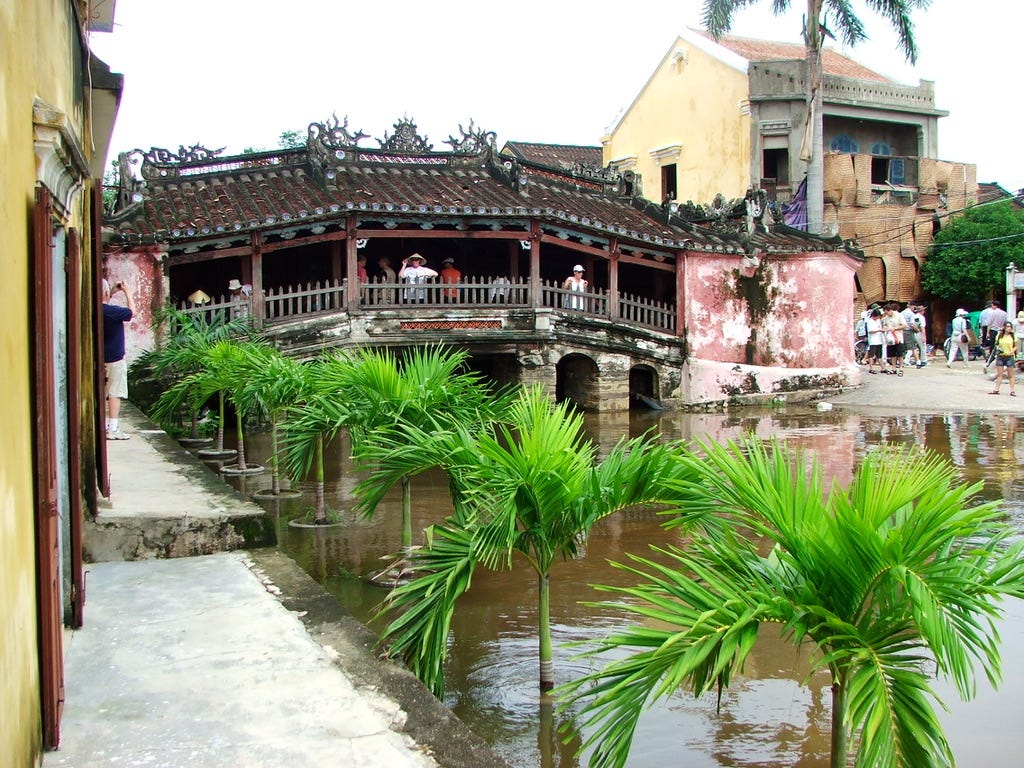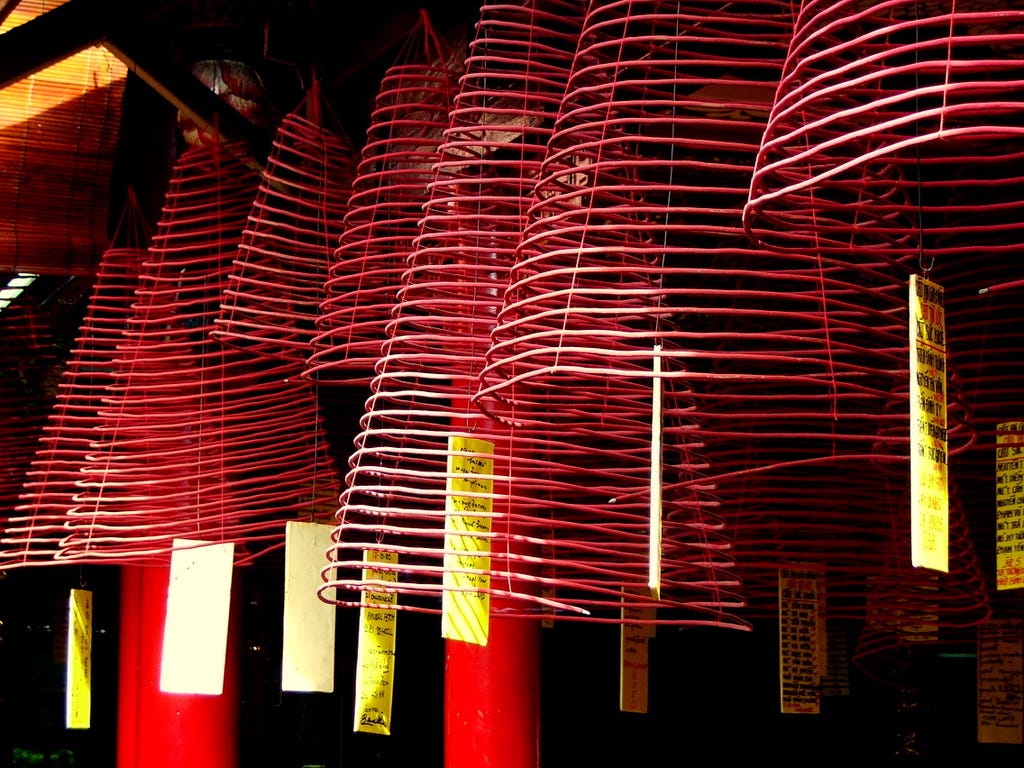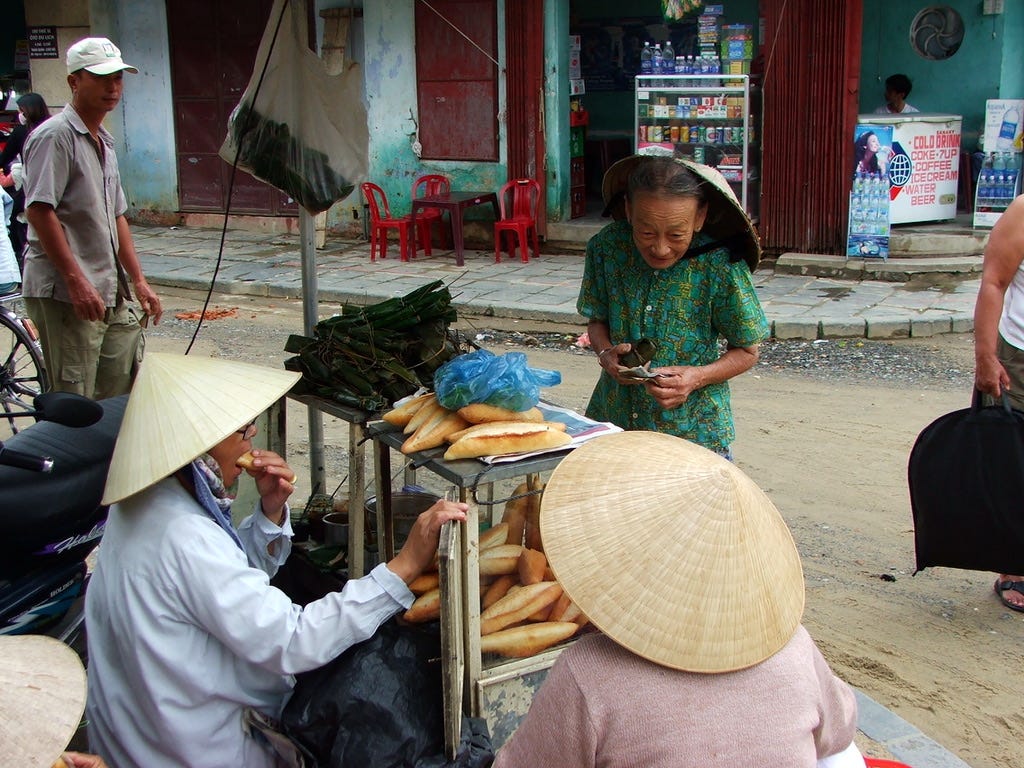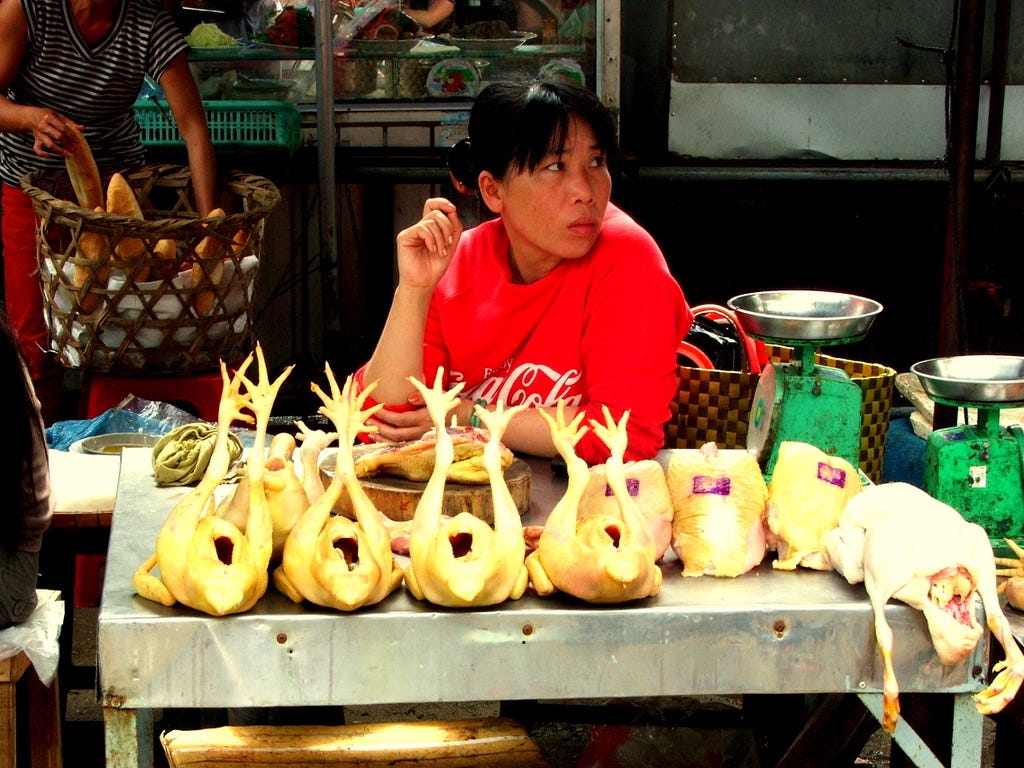A vendor's steady presence in a restless land
Hoi An, Vietnam. She stands as she always has, offering small comforts to those who stop, embodying a resilience that no guidebook captures.
It's early in the day when I first notice her. The morning light in Hoi An is different than elsewhere in Vietnam. Softer somehow, filtering through the mix of wood smoke and mist that clings to the canals curling through this ancient trading town.

By the time the sky turns from misty ink to pale gold, the old quarter of Hoi An is already shifting to life. The lantern-lined streets, so often the subject of postcard images, hold their quieter realities in these early hours. The scent of strong coffee drifts from open-front cafés, and motorbikes hum past with sacks of vegetables balanced or caged dogs on the back.
Tourists in their chaperoned groups will come later, disgorging from buses, boutique hotels and guesthouses. But for now, it is the people of Hoi An who own the streets: the fishmongers, the noodle vendors, the delivery boys hauling baskets of warm baguettes.
As shopfront shutters are peeled back or rolled up, she stands in a doorway, out of the way, arranging dried fish, or cured meats, or vacuum-sealed snacks, or rice paper treats on a large, worn metal tray, her conical hat casting a perfect shadow across features that have weathered many decades of Central Vietnam's unforgiving summers and damp, bone-chilling winters.
She stands for long stints. Then sometimes sits on a wooden stool. All the while her fingers never stop working, separating items, rearranging them by size or type, occasionally shooing away a persistent fly with a gesture so practiced it requires no conscious thought. You get the impression that this work is not a choice; it is the rhythm of her life.
Mornings bring local women shopping for ingredients before the day's heat intensifies. One woman, in her late 40s, buys dried squid. An elderly man buys a small bag of roasted sesame snacks. They exchange polite words, never lingering too long at this ‘peaceful meeting place’, which is the Vietnamese translation of Hoi An.
Later, she’ll watch foreigners pass, some glancing at her tray with curiosity but rarely stopping. Perhaps they assume she sells something unrecognisable, or perhaps she is simply too quiet, too much a fixture in the background to warrant notice. It does not seem to bother her.
Midday is slower. She shifts to the shade. Afternoons bring labourers stopping for quick, inexpensive protein before heading home. She knows that soon she will pack up and call it a day. Tomorrow, she will return, just as she always does. Because this is her place. Not as a relic, not as a spectacle for visitors to admire or ignore, but as a person with a life that stretches far beyond the small space she occupies on this bustling Hoi An street.
Her street, her turf, has seen some history. Ruled by Chinese and Champa empires, Hoi An’s eventual prominence as a trading hub truly flourished between the 16th and 19th centuries. Formally established in 1527, the town rapidly developed from a small fishing village into a bustling trading port. By 1535, Portuguese explorers attempted to establish a major trading centre here. From 1570 onward, when Southern Vietnam came under the control of the Nguyễn clan, Hoi An thrived as a commercial outpost.
The port’s strategic location at the mouth of the Thu Bon River made it easily accessible to ocean-going ships, facilitating trade with merchants from across Asia and Europe. By the 18th century, Chinese and Japanese merchants considered Hoi An the premier trading destination in all of Southeast Asia. The city became a powerful trade conduit between Europe, China, India, and Japan, particularly renowned for its ceramic industry.
Back on the street, what strikes me most about this defiant woman is not her age or her circumstances, but the dignity with which she carries herself. Meticulously outfitted, her movements, despite arthritic, clawed fingers, maintain a grace that speaks to an inner discipline.
When I ask if I could take her photo, she nods and straightens her shirt and adjusts her hat. No smile for the camera, just the same dignified gaze that has watched Hoi An transform from an imperial capital to a war zone to a UNESCO heritage site, and now to a tourist hotspot, all while she stood in doorways selling produce to anyone who stopped.
As dusk descends, she moves on. Streets fill with more visitors, and more noise as different vendors set up makeshift stalls selling handmade trinkets and embroidered linens. Restaurants light candles on outdoor tables, their menus in English, French, and Chinese.
In a city that markets its history to foreigners hungry for authenticity, she offers something more valuable: a life lived without pretence in the shadows of Hoi An’s doorways, preserving a custom to derive an income, all while displaying a resilience that tells the true story of this place.














